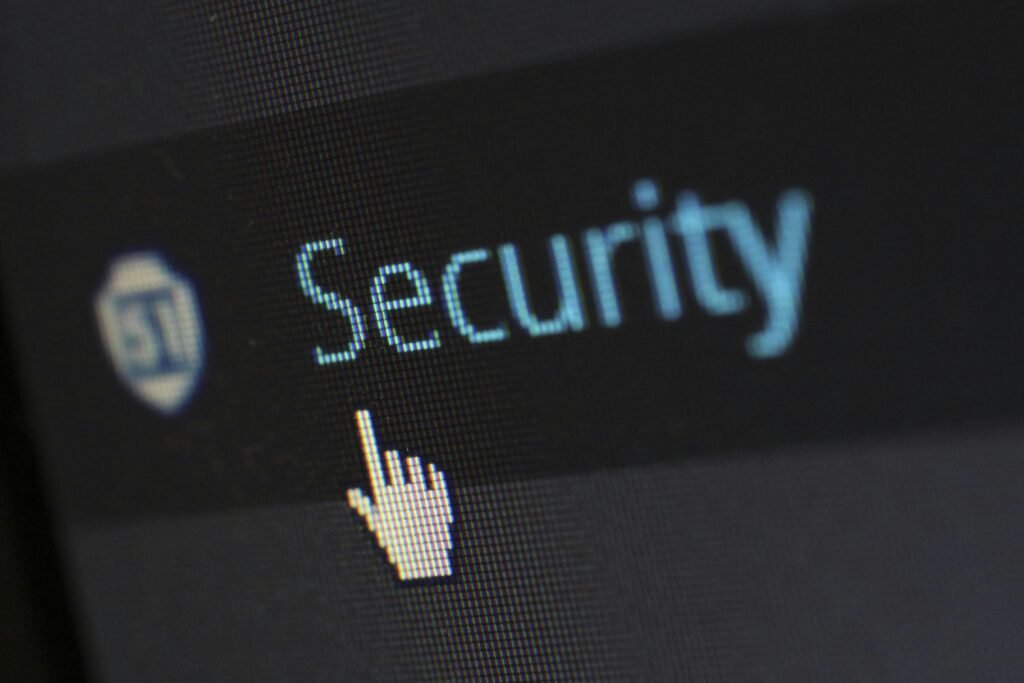The Future of Biometric Security Are Old Passwords Dead?
The Future of Biometric Security Are Old Passwords Dead? INTRODUCTION Security is on the agenda of the current digital era for people, businesses, and governments. Passwords have been the norm for authentication for decades, but they are plagued with critical weaknesses like phishing attacks, credential stuffing, and weak password hygiene. As cyberattacks become increasingly sophisticated and advanced, biometric security is now increasingly popular as a safer and more futuristic answer to authentication. The Future of Biometric Security is greater convenience, greater protection, and more intelligent user experiences. Are passwords dead, however? Let us look at the future of biometric security, advantages and disadvantages, and where the future is headed. What is Biometric Security? Biometric security is that mode of authentication system that uses the natural biological features of an individual to verify identity. They can vary from as universal as fingerprints, facial recognition, iris scan, voiceprints, or as quirky as behavioral biometrics such as keystroke dynamics. Biometric security is unique from traditional passwords in that it provides a customized and effectively impenetrable means of verification. Types of Biometric Security Fingerprint Identification – Quite probably one of the most ubiquitous biometric identification technologies used in mobile phones, banking applications, and security access. Facial Recognition – Used for instant recognition by security systems, mobile phones, and airports. Iris Scanning – Very secure, used in border security and secure settings. Voice Recognition – Allows voice-enabled authentication using pattern, widely used in call centers. Behavioral Biometrics – Analyzes idiosyncratic behavior such as movement of the mouse pointer or typist on the keyboard. Palm Vein Authentication – Employs palm vein patterns to offer high-security authentication. The Password-to-Biometric Security Transition Passwords have reigned supreme in online verification for years but are far from perfect with some shortcomings: Users use weak passwords or one universal password for most sites. Phishing undermines password security. Passwords can be lost, forgotten, or intercepted by rogue employees. With such constraints, organizations are turning to biometric authentication as a far superior option. The Future of Biometric Security is paving the way for a passwordless digital identity world that is more secure and frictionless. Advantages of Biometric Security Improved Security – Biometrics are distinctive, so it is hard for hackers to impersonate. Convenience – Simple, no remembering long passwords or constant change. Speed and Efficiency – Verifies in seconds with an enhanced user experience. Less Fraud Risks – Biometric verification deters unauthorized users and identity theft. Multi-Factor Authentication (MFA) – Biometrics can be blended with conventional passwords or PINs to enhance security. Scalability – Biometric security products are scalable to sectors like finance, healthcare, and government. Challenges and Biometric Security Threats. 1. Privacy Concerns Biometric information can be stored in peril as much as privacy. Tampered biometric information can’t be revised, unlike passwords. Organisations need to practice good data protections. 2. Breaches There will always be attackers seeking an entry into biometric databases. Sturdy encryption and decentralized storage must be present. 3. Spoofing and Deepfake Attacks It can be spoofed with the help of deepfakes by hackers and thus anti-spoofing controls must be enhanced. 4. Enormous Implementation Costs Biometric security solutions of the next generation comprise high-tech technology, which is expensive for governments and organizations. 5. Legal and Ethical Concerns As concerns about corporations and governments abusing biometric data grow, regulation has become a concern. 6. Accessibility Issues Not all persons can utilize biometric authentication due to disability or physical conditions impairing fingerprint or facial recognition. The Future of Biometric Security: Trends and Innovations 1. AI-Driven Biometric Authentication Artificial intelligence is revolutionizing biometric security with higher accuracy, fraud prevention, and adaptive authentication. 2. Blockchain and Decentralized Identity Blockchain technology is being introduced in biometric security solutions for the purpose of greater data protection and breach resilience. 3. Contactless Biometric Identification After the pandemic, contactless biometric identification (i.e., face recognition, iris scan) becomes popular as a hygienic and convenient practice. 4. Biometric Payments Banks employ biometric authentication in payment systems to guard against electronic payment fraud. 5. Behavioral Biometrics Along with physical biometrics, behavioral biometrics monitor user behavior like keyboard typing speed and touchscreen activity to increase security. 6. Multimodal Biometric Systems Together, multiple modes of biometric verification, such as voice and fingerprint, offer security and authenticity. 7. Edge Computing Biometric Security Execution of biometric information locally within devices rather than the cloud ensures faster performance and protection for confidential information. 8. Smart Home and IoT Devices Biometric Authentication Integration Smart home and IoT devices are coming with biometric verification, offering increased security in common usage. 9. Continual Authentication Reengineered from single-factor authentication, systems are shifting towards continuous authentication, with biometric data being calculated during a user session for increased security. 10. Global Standardization and Regulatory Frameworks Governments and institutions are working together to create global biometric security standards that will enhance interoperability and compliance with privacy legislation. 11. Biometric Security for Remote Workspaces With the remote work trend, organizations are using biometric authentication to establish secure entry into the organization’s network and defend against unauthorized breaches. 12. Biometrics and Quantum Cryptography Evolution Biometric security with quantum cryptography can transform data security to the point where it’s virtually impossible to crack authentication processes. 13. Biometric Augmentation of Man and Implants The next-generation technology will include human enhancement technology along with biometric implants enabling frictionless verification with existing chips or neural interfaces. 14. Advanced Liveness Detection Future anti-spoofing technologies like advanced liveness detection ensure biometric authentication cannot be spoofed by replicas and ensure they can distinguish between attempts and legitimate users. 15. Smart City Adoption Biometric verification is increasingly becoming a critical security feature of smart cities, providing secure access to public services, transport, and surveillance networks. Will Passwords be Phased Out in the Near Future? As biometric security continues to advance, passwords will be secondary but not primary means of verification. Total elimination of passwords from the flow in the near future is however unlikely because of: The requirement for fallback authentication mechanisms. Supplies problems with older systems. Privacy and regulation issues. Enterprises
The Future of Biometric Security Are Old Passwords Dead? Read More »











